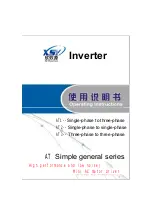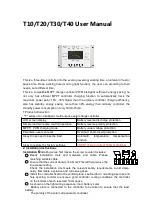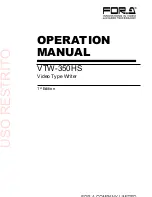The
DB9
connectors
should
be
soldered
next.
Note
that
the
male
connector
is
installed
on
the
right
side,
and
the
female
connector
is
installed
on
the
left.
The
rest
of
the
parts
may
be
installed
in
any
order.
The
16
‐
pin
DIP
socket
for
the
microcontroller,
U1,
is
optional,
but
recommended
to
facilitate
replacement.
Resistor
R3
is
used
for
PTT
keying
with
certain
types
of
handheld
radios.
For
other
radios,
particularly
mobiles
and
Kenwood
handhelds,
this
resistor
may
be
omitted.
See
section
4
for
more
information.
Pay
close
attention
to
component
polarity.
Diodes
D1
and
D2
have
their
cathode
ends
marked
with
a
black
band.
This
corresponds
to
the
line
at
the
pointed
end
of
the
symbol
shown
for
these
parts
on
the
silkscreen.
The
LED
should
have
its
short
lead
and/or
flat
edge
installed
to
the
left,
facing
D1.
The
microcontroller,
U1,
has
a
reference
notch
on
one
edge
that
should
face
left
as
shown
in
the
diagram
below.
To
straighten
U1’s
pins
prior
to
insertion,
place
one
row
of
pins
on
a
hard,
flat
surface.
Hold
the
IC
by
the
edges
and
gently
roll
it
until
the
pins
reach
the
correct
angle.
Repeat
for
the
other
row,
and
insert
the
IC
into
its
socket
gently,
making
sure
that
each
pin
is
aligned
with
its
hole.
Install
all
diodes
and
resistors
vertically.
One
lead
should
be
bent
around
parallel
to
the
component.
For
resistors,
the
body
of
the
component
is
installed
over
the
pad
indicated
with
a
circle
on
the
silkscreen.
OpenTracker Manual - Version 1.05 – 6/25/06
page of
23
5


















